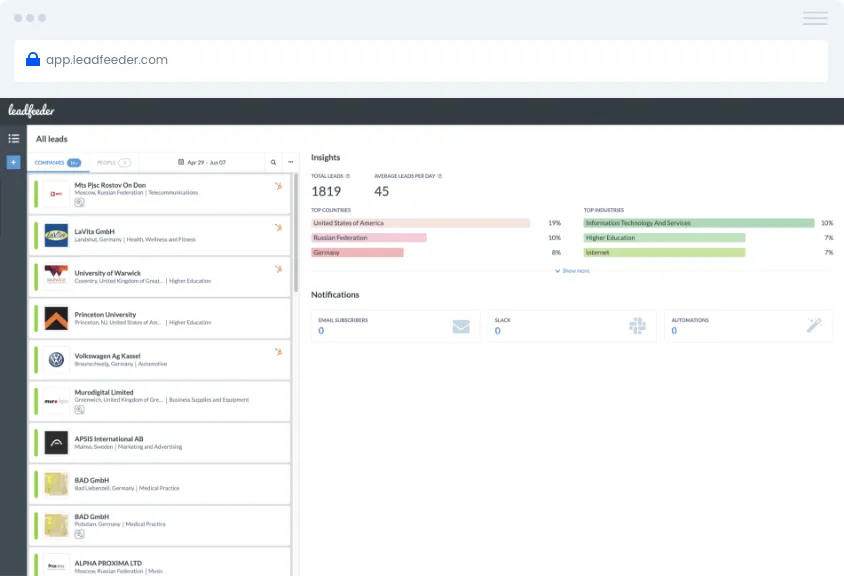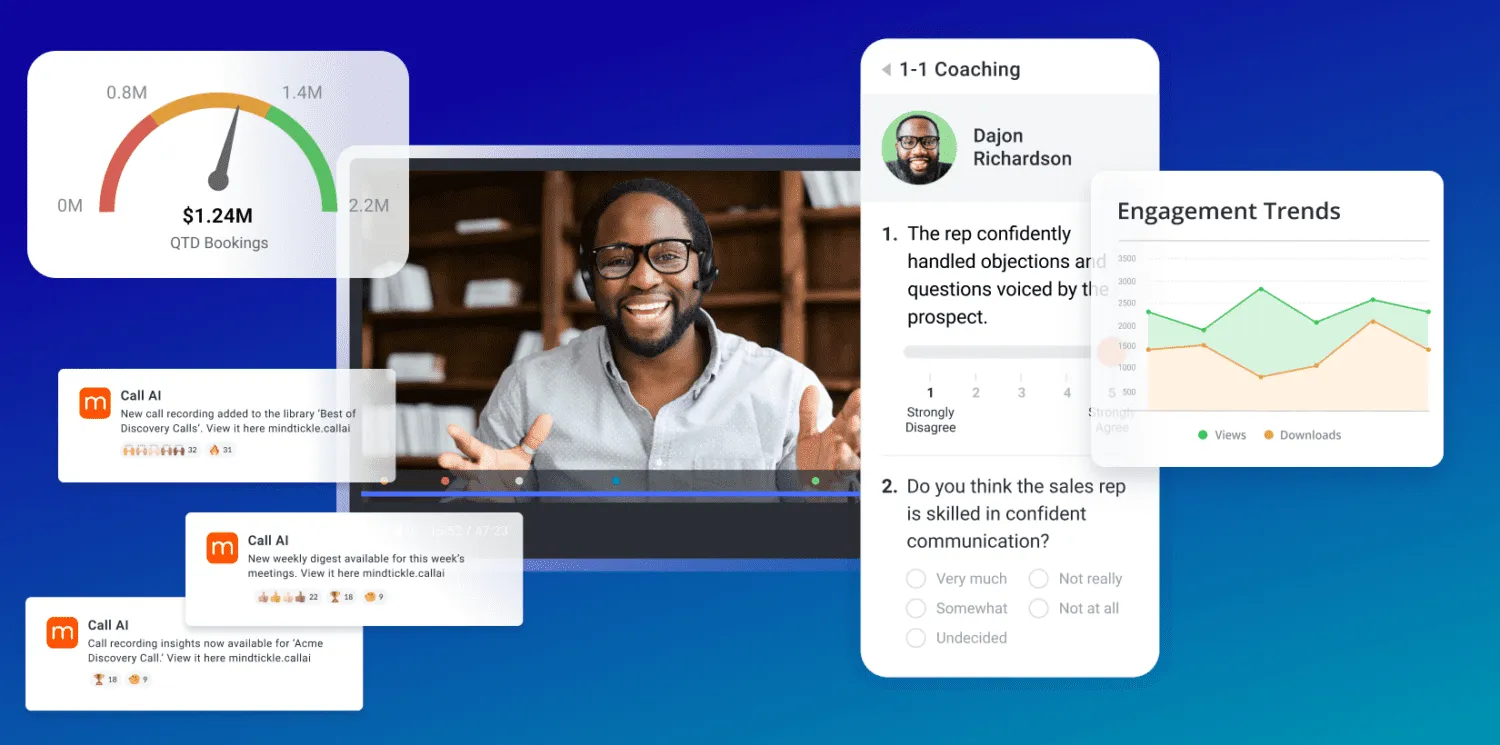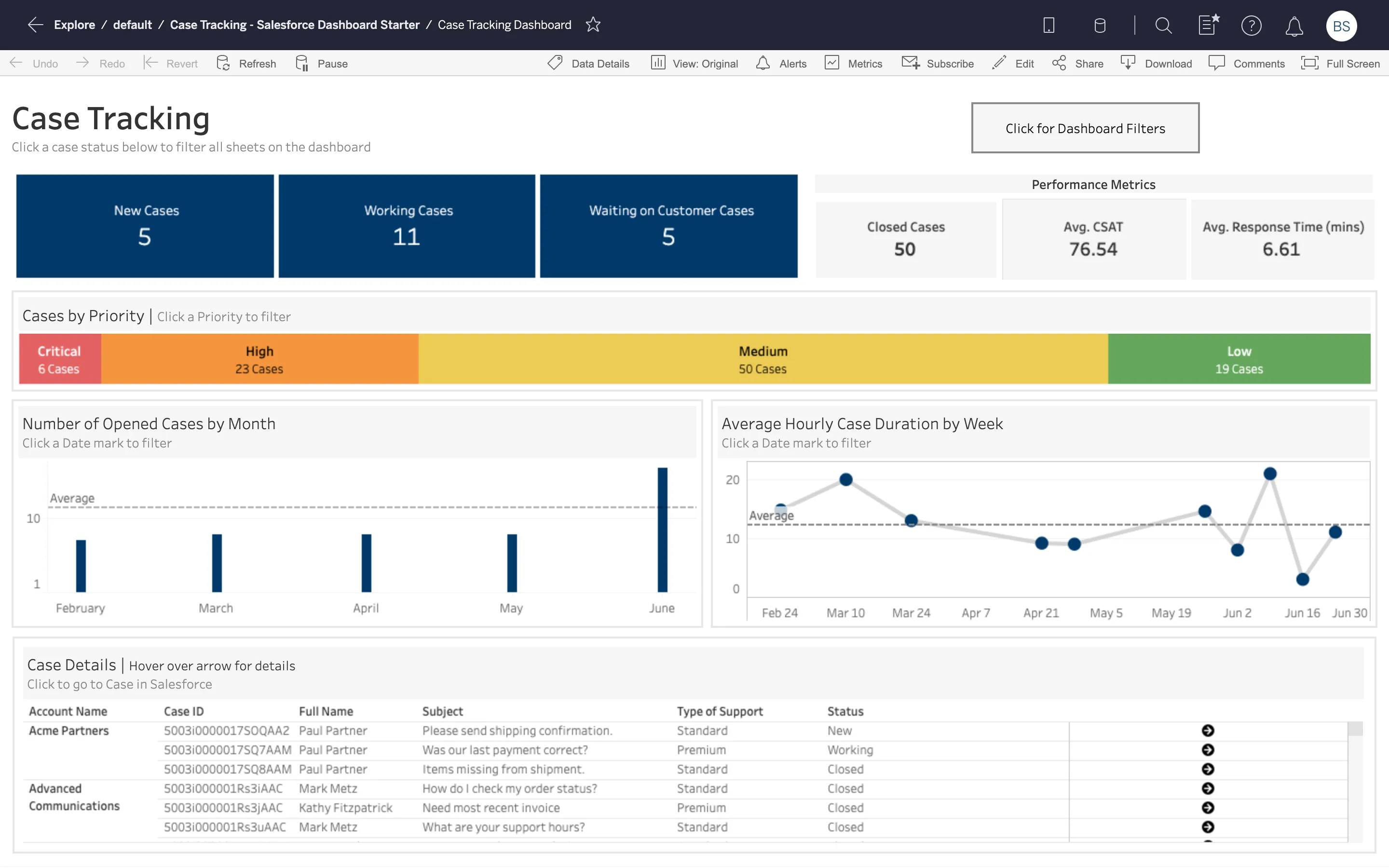What is a Sales Call

A sales call is an important component of the sales process, where sales reps (sales representatives) initiate contact with potential customers through phone calls or face-to-face meetings.
The primary objective of a sales call is to introduce the product or service to the prospect, identify their pain points, and propose a tailored solution that addresses those needs.
Successful sales calls require careful preparation, including prospect research to understand the potential customer's business and its challenges.
Utilizing a sales call script can guide the conversation, ensuring all vital points are covered. However, the ultimate goal is to build rapport, making each interaction a step towards a successful sales relationship.
Importance of Sales Calls
- Building Relationships: Sales calls allow representatives to establish and nurture relationships with customers, providing a foundation for trust and loyalty.
- Understanding Needs: They offer a direct channel to understand and address the specific needs and concerns of customers.
- Immediate Feedback: Sales calls provide instant feedback on products or services, allowing for quick adjustments to sales strategies.
- Increased Conversion Rates: According to a study by RAIN Group, sales professionals who excel at needs discovery are 2.8 times more likely to achieve high sales performance.
How to Prepare for a Successful Sales Call

Preparing for a successful sales call involves several key steps designed to optimize your approach and maximize your chances of engaging your prospect effectively. Here's a detailed, point-by-point guide:

1. Conduct Thorough Prospect Research
- Gather information about the prospective customer’s business, industry, and market position.
- Identify the key decision-makers and their roles within the organization.
- Understand the prospect's current challenges, pain points, and objectives.
2. Develop a Customized Sales Call Script
- Craft a script that outlines the flow of the conversation, including greetings, introductions, and key questions.
- Highlight your product or service’s benefits tailored to the prospect’s specific needs and pain points.
- Incorporate potential questions the prospect might have about your offering.
3. Set Clear Objectives for the Call
- Define what you want to achieve with the call, such as qualifying the lead, setting up a meeting, or making a sale.
- Prioritize your objectives to ensure the most important goals are addressed first.
4. Practice Your Pitch
- Rehearse your sales pitch and the flow of conversation as outlined in your script.
- Practice addressing common objections and questions with confident and well-thought-out responses.
5. Prepare to Handle Objections
- Anticipate potential objections or concerns the prospect might have.
- Develop responses that address these objections constructively, showing an understanding of the prospect's viewpoint.
6. Outline the Benefits of Your Product or Service
- Clearly articulate how your offering can solve the prospect's problems or improve their situation.
- Use data and examples to back up your claims and make your case more compelling.
7. Prepare for Follow-Up
- Decide in advance how you will follow up after the call, whether through an email summary, sending additional information, or scheduling another meeting.
- Timely and relevant follow-up is crucial for maintaining momentum and interest.
11 Proven Sales Call Tips to Keep Your Prospect Engage

1. Establish Rapport Early
The initial moments of a sales call set the tone for the entire conversation. Establishing rapport early helps create a comfortable environment, making the prospect more open to listening and engaging with your message.
Start by doing your homework. Research your prospect to find common ground or points of interest that can serve as conversation starters. This could include recent company achievements, mutual connections, or shared interests.
Using a warm, friendly greeting and showing genuine interest in their well-being can also pave the way for a productive dialogue.
2. Identify and Speak to Their Pain Points
Understanding and addressing the prospect's pain points is at the heart of successful sales calls. It demonstrates empathy and positions your product or service as the solution to their specific problems.
Prior to the call, conduct thorough prospect research to uncover their challenges and needs. During the conversation, ask open-ended questions that encourage them to elaborate on these issues.
Listen actively to their responses, and tailor your pitch to highlight how your offering directly addresses their concerns.
3. Leverage Storytelling
Storytelling is a powerful tool in sales as it can transform a pitch from a simple transaction into an engaging narrative that illustrates the value of your offering. Stories help prospects visualize the benefits in a real-world context, making the information more relatable and memorable.
Share success stories of how your product or service has helped other customers overcome similar challenges.
Focus on the journey of problem identification to solution implementation and the positive outcomes that followed. Ensure your stories are relevant and resonate with the specific needs of your prospect.
4. Seek Collaboration
Viewing the sales call as a collaborative effort rather than a pitch can fundamentally change the dynamic of the conversation. It positions you and your prospect as partners working together to find a solution, which can significantly increase their engagement and investment in the outcome.
Encourage the prospect to share their thoughts, feedback, and desires throughout the call.
Use phrases like, "How do you see this fitting into your workflow?" or "What solution are you envisioning?" This not only provides valuable insights but also makes them feel valued and part of the process.
5. Embrace Silence
Silence can be a powerful tool in sales calls. It gives prospects time to think and formulate their thoughts. Many salespeople fear silence and rush to fill it, potentially missing cues or opportunities to deepen the conversation.
After posing a question or presenting information, allow a moment of silence. Resist the urge to jump in too quickly. This patience can encourage the prospect to open up more or reveal deeper insights into their needs and concerns.
6. Prioritize Listening Over Talking
Effective communication is more about listening than talking. By prioritizing listening, you can better understand the prospect's needs, tailor your responses more accurately, and build a stronger relationship.
Practice active listening. Focus on what the prospect is saying without planning your response while they speak. Reflect on their words through summarizing or asking clarifying questions.
This approach not only shows that you value their input but also ensures you're addressing their specific concerns with your solutions.
7. Demonstrate Flexibility
Flexibility in a sales call signals to the prospect that you’re willing to adapt your offering to meet their unique needs. This adaptability can significantly increase their interest and trust in what you’re proposing, as it shows you’re focused on providing value rather than just making a sale.
Be open to diverging from your planned script based on the conversation's flow and the prospect's feedback.
If they express concerns or needs that your standard offering doesn’t address, be ready to discuss alternative solutions or customizations. Use phrases like, “Let’s explore how we can adjust this to better suit your needs.”
8. Project Authenticity
Authenticity builds trust, and trust is the foundation of any successful sales relationship. Prospects are more likely to engage with and buy from someone who they believe is genuine and honest, rather than someone who comes across as performing a rehearsed pitch.
Share personal anecdotes or experiences that relate to the product or service you’re selling or the challenges your prospect is facing. Be honest about what your offering can and cannot do.
This honesty will not only set realistic expectations but also strengthen the prospect's trust in you and your company.
9. Highlight Exclusivity
Emphasizing the exclusivity of your product or service can create a sense of urgency and importance. It makes the prospect feel they are being offered something special, increasing their interest and the perceived value of your offering.
Explain what sets your product or service apart from competitors. Mention any exclusive features, benefits, or opportunities that come with choosing your solution.
Use phrases like, “We offer a unique approach that’s not available elsewhere,” or “Our clients receive personalized attention that ensures their success.”
10. Be Consultative
Adopting a consultative approach transforms the sales call from a transactional interaction into a value-driven conversation. This method positions you as an advisor rather than just a salesperson, fostering a deeper level of trust and engagement from the prospect.
Focus on asking insightful questions that help you understand the prospect's business, challenges, and goals in depth. Offer expert advice and tailored solutions that align with their specific needs.
Demonstrate how your product or service can solve their problems or enhance their operations, emphasizing long-term benefits over immediate sales.
11. End With a Clear Next Step
Concluding the call with a clear understanding of the next steps is essential for maintaining momentum in the sales process. It ensures both parties know what is expected of them and what actions will follow, reducing the chance of the prospect losing interest or the lead going cold.
Summarize the key points discussed during the call, including any agreements or discoveries made. Then, propose a specific next action, such as scheduling a follow-up call, sending a detailed proposal, or arranging a product demo.
Ensure the prospect agrees to this next step and set a date and time if possible. This clarity helps keep the sales process moving forward and shows your commitment to addressing their needs.
6 Best Opening Lines for a Sales Call

Crafting the perfect opening line for a sales call can significantly impact the outcome of your conversation. A well-thought-out opener not only grabs attention but also sets the tone for a productive dialogue.
Understand Your Prospect
Starting with a personalized approach shows you value your prospect as an individual, not just another number in your sales targets.
- "I noticed your company recently achieved [achievement]. Congratulations! How are you planning to build on this success?" This shows you've done your homework, acknowledging their hard work and inviting them to discuss their future plans.
- "In preparing for our call, I came across an interesting stat: companies in your sector have seen a [specific percentage] increase in [specific area]. How does that align with your experiences?" Using industry-specific data demonstrates your expertise and relevance, making the conversation immediately more meaningful.
Highlight Mutual Connections or Interests
A shared connection can instantly warm up the call, making it more likely for the prospect to engage.
- "John Doe, who I believe you know through [mutual connection], mentioned that your team might be facing challenges with [issue]. I’d love to explore how we might help with that." Referencing a mutual connection establishes trust and opens the door for a deeper conversation.
Present a Thought-Provoking Question or Fact
Opening with a question or fact that challenges conventional wisdom can immediately engage a prospect’s curiosity.
- "Did you know that 70% of businesses in your industry are planning to adopt [solution] by next year? Where does your company stand on this trend?" This approach leverages industry insights to prompt reflection and discussion, positioning you as a knowledgeable advisor.
Compliment Their Work or Achievements
A genuine compliment can make your prospect more receptive to your message.
- "I was really impressed by your latest product launch. It's clear there's a lot of innovation happening at your company. How do you see this evolving over the next year?" This not only flatters but also invites them to share more about their vision and challenges.
Offer Immediate Value
Proposing value from the get-go can pique interest and differentiate you from other sales calls.
- "I've helped businesses similar to yours achieve a [specific percentage] increase in [specific metric] within [time frame]. I'm curious to learn about your goals and see if I can help you do the same." Providing concrete numbers offers credibility and sets the stage for a value-driven conversation.
5 Proven Sales Call Scripts for Success

Script 1: The Initial Contact
Introduction and Purpose:
- "Hello [Prospect’s Name], this is [Your Name] from [Your Company]. We help businesses like yours achieve [specific goal or solve a specific problem]. I recently came across your profile and noticed [something relevant about their business or industry]. Can I take a moment to share how we might help you with [specific goal/problem]?"
Establishing Rapport and Need:
- "Before I dive in, may I ask what strategies you’re currently employing to tackle [specific area/problem]?"
- "Many of our clients were facing similar challenges and found our solution particularly effective. They appreciated our [mention a unique selling proposition or feature]."
Transition to Discovery:
- "Based on what you’ve shared, it seems like [summarize their situation]. How do you see a solution like ours fitting into your current strategy?"
Script 2: Mid-Call Pivot Based on Discovered Needs
Reframing the Conversation:
- "Thanks for sharing those insights, [Prospect’s Name]. Given what you’ve mentioned about [specific challenge they discussed], it sounds like our [specific product/service] could be a great fit. It’s designed specifically for situations like yours, where [explain how it addresses the challenge]."
Demonstrating Value:
- "For example, one of our clients in [a similar industry or situation] was experiencing [related challenge], and after implementing our solution, they saw [quantifiable outcome]. Could this type of result be beneficial for your team?"
Seeking Engagement:
- "Would it be helpful if we explored how this solution could be tailored to your specific needs? I can outline a potential approach that addresses your main concerns."
Script 3: Closing the Deal
Summarizing Value and Urgency:
- "Based on our conversation, it seems clear that our [product/service] aligns well with your goals, especially around [key point discussed]. Implementing our solution can lead to [specific benefits], similar to what we’ve seen with other clients."
Asking for Commitment:
- "What do you think about taking the next step with a trial period/implementation plan? We’ve seen significant improvements within just [time frame] for others in [their industry]."
Handling Last-Minute Hesitations:
- "If there are any hesitations or further questions, I’d be happy to address them now. Our goal is to ensure that you feel completely confident and informed about how our [product/service] can make a difference for [Prospect’s Company]."
Scheduling Follow-Up:
- "Can we schedule a follow-up meeting next week to discuss any further questions and outline the next steps? What day works best for you?"
Script 4: Overcoming Objections
This script focuses on addressing and overcoming common objections encountered during sales calls. It emphasizes empathy, understanding, and providing tailored solutions.
Acknowledging the Objection:
- "I understand where you're coming from, [Prospect's Name]. Concerns about [insert objection, e.g., budget, contract terms, implementation] are quite common. Let's explore this a bit more."
Empathize and Offer Solutions:
- "Many of our clients initially shared similar concerns. What we've found is that [provide a solution or workaround, e.g., flexible payment plans, phased implementation]. This approach helped them [achieve a specific outcome] without [specific concern]. Would a solution like this be something you'd be open to considering?"
Show Value and Return on Investment (ROI):
- "Considering the impact of [product/service] on [specific benefit, e.g., productivity, cost savings], our clients typically see a return on their investment within [timeframe]. I can share some case studies that highlight these results. It might offer a new perspective on [the objection]."
Seek to Understand Further:
- "Could you share more about your specific concerns? Understanding more will allow me to address them better or explore alternative solutions that align with your needs."
Script 5: Re-engagement Call
This script is designed for re-engaging prospects who have previously expressed interest but have not moved forward in the sales process. It aims to reignite interest and move towards a commitment.
Re-establish Connection:
- "Hello [Prospect's Name], this is [Your Name] from [Your Company]. We spoke a while back about [briefly describe the product/service and previous discussion point]. I'm reaching out to see how things are going with [specific area related to your product/service]."
Highlight New Developments:
- "Since we last spoke, we've made some exciting updates to our [product/service], including [describe new features, services, or improvements]. These updates have [describe the benefits or success stories since the updates], providing even more value to our clients."
Offer Special Incentives:
- "To re-engage our conversation, I'd like to offer [describe any special offer or incentive, e.g., a discount, extended trial, free consultation]. It's a way for us to demonstrate the added value we can bring to your business, especially considering [reiterate how it addresses their needs or challenges]."
Propose a Next Step:
- "I believe a quick [call/meeting/demo] could be very beneficial to revisit your current needs and how our updated [product/service] can meet those needs. What does your schedule look like for a brief discussion?"
How to Handle Sales Calls: Overcoming Objections and Challenges

Handling sales calls effectively, especially when overcoming objections and challenges, is a critical skill for any sales professional.
The ability to navigate through objections not only helps in closing deals but also in building lasting relationships with prospects. Here's a structured approach to mastering this aspect of sales calls.
Understanding the Prospect's Perspective
The first step in overcoming objections is to genuinely understand where the prospect is coming from. It's important to listen actively and empathize with their concerns before jumping into solutions.
- Listen Carefully: 93% of communication effectiveness is determined by non-verbal cues. Pay attention to what is said and how it's said.
- Clarify: Ask clarifying questions to ensure you fully understand the objection. This can often reveal underlying issues that the prospect may not have explicitly stated.
Handling Common Objections
Dealing with objections requires a blend of preparation, patience, and adaptability. Here are common objections and strategies to address them:
Price Concerns
Often the most common objection, price concerns can usually be mitigated by demonstrating the value and ROI of your offering.
- Strategy: Highlight the cost of inaction or the potential savings/earnings over time. Use data from case studies showing how your solution has saved or earned money for similar clients.
Satisfaction with Current Solutions
Prospects may be hesitant to change due to satisfaction with their current provider or solution.
- Strategy: Focus on what sets your offering apart. Emphasize innovation, ease of use, or customer service superiority. Ask what improvements they'd like to see in their current solution, subtly introducing how your product addresses those areas.
Long Implementation Times
Concerns about the time and resources required for implementation can be a significant barrier.
- Strategy: Provide a clear implementation timeline, backed by examples of successful, on-time implementations. Offer support services that make the transition smoother.
Building a Case with Data
Using data effectively can turn objections into opportunities. Here are ways to leverage data:
- Industry Benchmarks: Use industry benchmarks to show how your solution performs against averages. For instance, "Clients using our solution see a 25% faster implementation time compared to industry standards."
- Success Stories and Testimonials: Share success stories and testimonials that are relevant to the prospect's industry or specific objection. "Our client in the healthcare sector reduced patient wait times by 40% within three months of using our platform."
The Importance of Follow-Up
Objections may not always be overcome in a single call. The follow-up process is crucial:
- Summarize and Document: After the call, send a summary of what was discussed, especially how you addressed objections. Include any additional information or data that supports your case.
- Set a Clear Next Step: Whether it's another call, a demo, or sending over a proposal, make sure there's a clear next step in the sales process. "I'll send over our case study that details the ROI for a similar project by end of day. Can we schedule a follow-up call next Tuesday to discuss any questions?"
Techniques for Ending Sales Calls on a High Note: Closing the Deal

The techniques employed in the final moments of a call can significantly influence the prospect's decision-making process. Here's how to ensure your sales conversations end on a high note, encouraging prospects to move forward.
Summarize Key Points
Begin the conclusion of your call by summarizing the main points discussed. This reinforces the value proposition and ensures clarity on both ends.
- Highlight Solutions: Recap how your product or service addresses their specific pain points.
- Reiterate Benefits: Briefly remind them of the unique benefits or results they can expect.
Confirm Understanding and Agreement
Ensuring that the prospect has no lingering doubts is crucial. This step solidifies the groundwork laid during the call.
- Ask for Feedback: "Based on our discussion, how do you see our solution fitting into your current strategy?"
- Clarify Doubts: Address any uncertainties or questions they might have, reinforcing the value and feasibility of your solution.
Provide a Clear Call to Action
The end of the call should naturally lead to the next steps in the sales process. A clear call to action guides the prospect towards making a decision.
- Set a Date for the Next Sales Call: Propose a specific time for a follow-up call to discuss further steps or answer any questions that might arise.
- Send Additional Information: Offer to send over a detailed proposal or case studies that further illustrate the benefits of your offering.
Utilize Smart Product Positioning
Adopt smart product positioning by tailoring the conclusion of your call to highlight how your solution uniquely solves the prospect's challenges in a way that competitors can't.
- Tailor the Message: Customize your closing remarks to emphasize aspects of your product or service that directly address the prospect's expressed needs or industry-specific challenges.
Encourage Immediate Action
Creating a sense of urgency without appearing pushy can motivate the prospect to act sooner rather than later.
- Limited-Time Offers: Mention any current promotions or discounts that apply if they decide quickly.
- Highlight Demand: If applicable, share insights on how others in their industry are already benefiting from your solution, suggesting a trend they might not want to lag behind.
Sign Off Positively
Ending the call on an optimistic and friendly note leaves a lasting positive impression, making prospects more likely to continue the conversation.
- Express Gratitude: Thank them for their time and consideration, regardless of the immediate outcome.
- Offer Availability: Let them know you're available to answer any further questions, reinforcing your commitment to assisting them.
Types of Sales Calls
When making sales calls, there are primarily two types to consider:
1. Cold Calls
Cold calls are sales calls made to potential customers who have had no previous contact with the salesperson making the call. This approach is called "cold" because the call is unsolicited and the recipient is not expecting to be contacted.
The main challenges with cold calling include the lack of prior relationship or awareness of the product or service being offered, which can lead to high rejection rates.
However, cold calling can be an effective way to generate new leads, especially when targeted effectively and conducted in a professional manner.
2. Warm Calls
Warm calls, on the other hand, are made to potential customers who have had some form of interaction with the company or salesperson before the call. This interaction could be anything from filling out a form on a website, expressing interest at a conference, subscribing to a newsletter, or any previous communication that has established a basic level of familiarity with the brand.
Warm calls are generally more welcome than cold calls because the prospect has already shown some level of interest or awareness of the product or service.
This prior interaction increases the likelihood of a positive response, making warm calls a more effective and efficient way to build relationships and close sales.

Techniques for Cold Calls and Warm Calls
Cold Calls: Strategies and Techniques
1. Engagement Questions: Ask open-ended questions to engage the prospect in a meaningful conversation.
- This helps in gathering more information about the prospect's needs and builds rapport.
- Questions like “What challenges are you currently facing in [area of your product/service]?” can open up the conversation.
2. Follow-Up Strategy: Always have a clear follow-up plan, such as sending additional information or scheduling another call.
- According to a study by the Rain Group, 80% of sales require five follow-up calls after the initial contact, yet 44% of salespeople give up after one follow-up.
3. Leverage Previous Interactions: Start by referencing any prior interactions, such as email exchanges, social media engagement, or previous meetings.
- This establishes a connection and recognition, making the prospect more receptive to the conversation and sales call process
- Mention the specific interaction and any positive outcomes from it to reignite their interest.
4. Customized Solutions Based on Interest: Use the prospect's demonstrated interest to offer tailored solutions.
- Demonstrating an understanding of their interests and needs fosters trust and credibility.
- If they've interacted with content about a particular product feature, dive deeper into how that feature solves their problem.
5. Value-Added Follow-Up: Provide additional value in your follow-up, such as exclusive content, a demo, or a trial.
- Offering something of value can significantly increase the chances of progressing through the sales funnel.
- Follow up with an email that includes an exclusive whitepaper or case study relevant to their business needs.
6. Use of Testimonials and Case Studies: Sharing success stories of similar clients can be particularly effective.
- Nielsen reports that 92% of people trust recommendations from peers over advertising.
- Testimonials and case studies serve as social proof, reducing the perceived risk of adopting your product or service, and can make a good sales call
- Share specific examples where your product or service has made a significant impact on a client's business.
Effective Tools to Use to Make Successful Sales Calls
1. Customer Relationship Management (CRM) Software

- Examples: Salesforce, HubSpot, Zoho CRM
- Helps manage customer data, track interactions, and follow up on leads. A good CRM can provide insights into customer behavior, automate tasks, and help personalize your sales approach.
2. Sales Intelligence and Lead Generation Tools

- Examples: LinkedIn Sales Navigator, Leadfeeder, ZoomInfo
- These tools help you find and connect with potential leads by providing detailed information about companies and individuals, including job roles, company size, and industry. They can also track website visitors and identify potential leads based on their online behavior.
3. Communication and Scheduling Tools

- Examples: Calendly, Microsoft Outlook, Google Workspace
- Simplify the process of scheduling calls or meetings without back-and-forth emails. These tools can integrate with your calendar and allow leads to book time directly.
4. Sales Enablement Platforms

- Examples: Showpad, Highspot, Seismic
- These platforms provide sales teams with the content, training, and coaching needed to engage their target audience effectively. They also offer insights into how prospects engage with content, which can be used to tailor follow-up conversations.
5. Email Tracking and Automation Tools

- Examples: Mailchimp, HubSpot Email Marketing, Yesware
- Allows you to track email opens, clicks, and replies, helping you understand the interest level of your prospects. Automation features can help you send follow-up emails at the right time to increase engagement.
6. Call Recording and Analysis Tools

- Examples: Gong, Chorus.ai, Talkdesk
- Record sales calls to analyze them later for improvement. These tools can provide insights into customer reactions, competitor mentions, and overall call effectiveness. They can also help in training new sales reps by providing real examples of successful calls.
7. Social Media Management Tools

- Examples: Hootsuite, Buffer, Sprout Social
- Manage multiple social media profiles, schedule posts, and engage with prospects across platforms. Social listening features can help you understand market trends and identify potential sales opportunities.
8. Sales Training and Coaching Platforms

- Examples: MindTickle, SalesHood, Lessonly by Seismic
- Provide ongoing training and coaching to sales teams to improve their skills. These platforms offer interactive learning modules, practice scenarios, and feedback mechanisms to help sales reps refine their approach.
9. Proposal and Contract Management Tools

- Examples: PandaDoc, Proposify, DocuSign
- Streamline the creation, sending, and signing of proposals and contracts. These tools can save time, reduce errors, and help you close deals faster by automating many of the administrative tasks involved.
10. Performance Analytics and Reporting Tools

- Examples: Tableau, Google Analytics, Power BI
- Analyze sales performance data to identify trends, track progress against goals, and make informed decisions about where to focus your efforts for the best results.
Key Highlight for Conducting Impactful Sales Call
- Sales Call Fundamentals: Understanding the role of sales calls in the sales process is crucial. Successful calls involve introducing products or services, identifying customer pain points, and proposing tailored solutions, necessitating thorough preparation and the use of sales call scripts.
- Importance of Preparation: Key preparation steps include prospect research, script development, objective setting, pitch practicing, objection handling, and follow-up planning. Each step aims to maximize engagement and achieve a productive dialogue.
- Engagement Strategies: Essential tips for engaging prospects include establishing rapport, addressing pain points, storytelling, collaboration, listening, flexibility, authenticity, exclusivity, consultative selling, and ending with a clear next action.
- Scripts and Opening Lines: The guide provides practical scripts and opening lines for various scenarios, such as initial contact, overcoming objections, and closing deals, serving as structured approaches for navigating sales conversations.
- Overcoming Objections: Addressing objections effectively involves understanding the prospect's perspective, using data-backed strategies, and leveraging success stories to build a compelling case.
- Technological Tools: Utilizing CRM software, sales intelligence, communication tools, and other technologies can streamline the sales process, improve efficiency, and close more deals.





.jpg)

.jpg)
